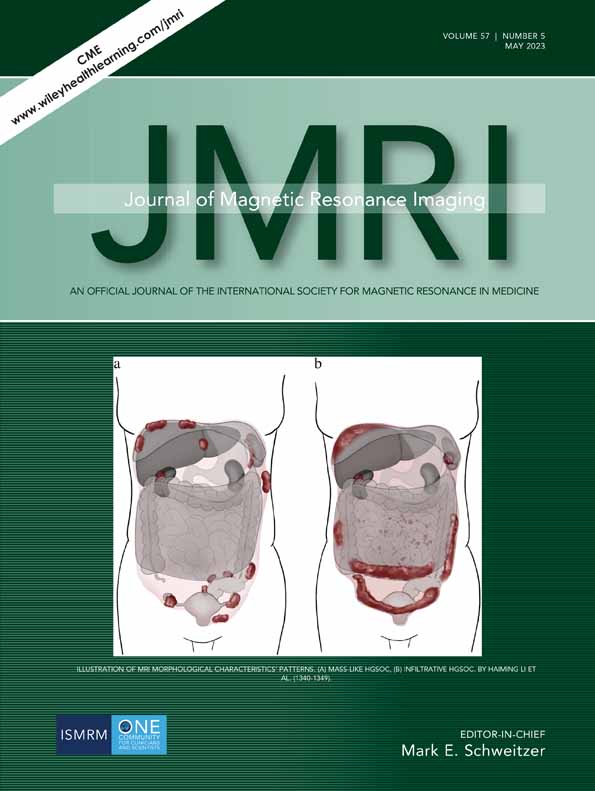Estimation of Cerebral Blood Flow and Arterial Transit Time From Multi-Delay Arterial Spin Labeling MRI Using a Simulation-Based Supervised Deep Neural Network
Abstract
Background
An inherently poor signal-to-noise ratio (SNR) causes inaccuracy and less precision in cerebral blood flow (CBF) and arterial transit time (ATT) when using arterial spin labeling (ASL). Deep neural network (DNN)-based parameter estimation can solve these problems.
Purpose
To reduce the effects of Rician noise on ASL parameter estimation and compute unbiased CBF and ATT using simulation-based supervised DNNs.
Study Type
Retrospective.
Population
One million simulation test data points, 17 healthy volunteers (five women and 12 men, 33.2 ± 14.6 years of age), and one patient with moyamoya disease.
Field Strength/Sequence
3.0 T/Hadamard-encoded pseudo-continuous ASL with a three-dimensional fast spin-echo stack of spirals.
Assessment
Performances of DNN and conventional methods were compared. For test data, the normalized mean absolute error (NMAE) and normalized root mean squared error (NRMSE) between the ground truth and predicted values were evaluated. For in vivo data, baseline CBF and ATT and their relative changes with respect to SNR using artificial noise-added images were assessed.
Statistical Tests
One-way analysis of variance with post-hoc Tukey's multiple comparison test, paired t-test, and the Bland–Altman graphical analysis. Statistical significance was defined as P < 0.05.
Results
For both CBF and ATT, NMAE and NRMSE were lower with DNN than with the conventional method. The baseline values were significantly smaller with DNN than with the conventional method (CBF in gray matter, 66 ± 10 vs. 71 ± 12 mL/100 g/min; white matter, 45 ± 6 vs. 46 ± 7 mL/100 g/min; ATT in gray matter, 1424 ± 201 vs. 1471 ± 154 msec). CBF and ATT increased with decreasing SNR; however, their change rates were smaller with DNN than were those with the conventional method. Higher CBF in the prolonged ATT region and clearer contrast in ATT were identified by DNN in a clinical case.
Data Conclusion
DNN outperformed the conventional method in terms of accuracy, precision, and noise immunity.
Evidence Level: 3
Technical Efficacy: Stage 1




